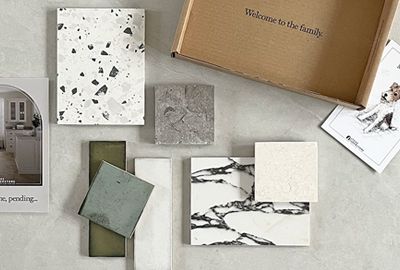When it comes to beautiful and durable tiling for your home, there are few materials more suited to the task than quartz. Not only is quartz stain, scratch, and water resistant, but its vast range of colour options also makes it simple to find a shade that matches your home aesthetic.
But exactly what is quartz? And how is it that one of the hardest materials on the planet can be readily turned into a smooth and seamless tile set for use in any area around your home?
To help give you a better understanding of this popular material, here is everything you need to know about quartz, its colour range, and its use as tiles.
How is quartz formed to make tiles?
So, first things first: how is quartz made? When most people think of quartz, their mind is most likely drawn to the common opaque crystals found in mines and caves around the world. Natural quartz itself is formed underground as magma slowly cools; the slower the cooling, the bigger the crystals.
Quartz tiling, on the other hand, is entirely manmade, and truth be told, is not actually formed of 100% quartz.
Instead, quartz tiles are what’s known as an agglomerate – engineered tiles – and are a composite material rather than a solid block of crystal, though that’s not to say quartz tiles don’t include any quartz.
The composite of this type of tile is made from a combination of resin, quartz, sand, colour pigment, and more often than not, crushed mirror pieces. This blend of materials allows engineers to create a hardened surface that’s perfect for tiling, while simultaneously being easy to shape and cut for a seamless fit, all while retaining that glimmering quartz quality that gives this type of tiling its name.
Quartz tiling itself is manufactured on a global scale. The majority of quartz tiles available in the market today come from China, but retailers can be found both locally in the UK.
How is quartz tile quality retained?
While all forms of quartz-based surfaces are hardened and tough, as a general rule of thumb, the composition of the raw materials and the percentage of resin used is what determines the overall quality of quartz tiles. And for the tile quality to be consistent, these need to be maintained to a high standard.
Here at Stone Superstore, for example, all our quartz tiles are manufactured to the optimum ratio of 93% quartz and 7% resin. This focus on using as much quartz as possible is what makes these tiles so durable and hard-wearing.
A 93%/7% quartz-resin split is widely considered to be the ratio that creates the most stable and durable quartz tiles. If you raise the resin content any higher, you reduce the tile’s resistant qualities while also making it more porous and susceptible to water damage. In turn, adding more quartz will make the tiles brittle and less stable.
What colour is quartz?
Unlike materials such as natural stone, quartz tiling is available in a wonderful array of colours, from vibrant pink to electric blue, green, purple, and even sparkling black. This is achieved through the use of pigments to get a wider colour range, but one that still looks as though the quartz is one unbroken block.
Sometimes, the colours of quartz available are so numerous that it can be tricky to work out which hue is best suited for your home! Though, black and white tiles are usually the most popular and are certainly flexible enough to suit a range of home styles.
Finally, on top of these pigments, many tiles might also have crushed mirrors added to the mix during production to provide a twinkling and reflective starlight effect, something that’s become more and more popular in recent years.
Quartz surface finishes
Quartz tiles are usually kept at a thickness of 10mm to 12mm. Tiles of 10mm thickness tend to be cheaper, while 12mm tiles are often more stable and less prone to warping if exposed to heat or water absorption created by adhesives during installation.
Similar to porcelain tile finishes, all quartz tiles can be polished to a shine, though not to the same degree as marble. However, this is not necessarily a bad thing, as the reduced shine can lend a more muted feel to a room and will contribute less glare on bright days.
How can quartz tiles be used?
As we’ve already mentioned, quartz is a very versatile material and can be used in kitchens, bathrooms, and high-traffic living areas. It's really durable and, unlike natural stone tiles, doesn't need treating with any products to seal it, as it's practically stain-proof. So, if there’s anywhere in your home in need of a solid surface, quartz is ideal.
Using quartz tiles with underfloor heating
As quartz is a resin-based product, the general industry-wide advice is that it is not suitable for use with underfloor heating. As we mentioned previously, the resin part of the quartz is susceptible to expansion and contraction when subjected to heat, and underfloor heating will do just that.
And there you have it; now you know exactly how quartz tiles are made, the types of colours they have on offer, and where in the house you might like to install them. Of course, if you still have questions you want to ask, get in touch with the Stone Superstore team today?
With a wide range of tiling products, and a team of knowledgeable experts on hand to help, you can be sure you’re in good hands when you visit our stores. And for more pieces like this, don’t forget to check out our full range of guides to choosing between natural stone and porcelain tiles.


